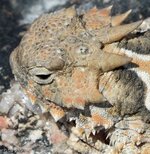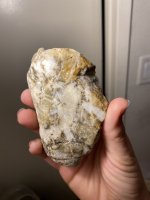sdcfia
Silver Member
- Sep 28, 2014
- 3,663
- 8,899
- Primary Interest:
- Other
<cut>
If the LDM tales told us it was located in the high Rockies above 11,000 feet in wilderness areas, far away from any roads or major cities, and you could only search for it a couple of months out of each year, would we even be talking about it today? Would it have its own show? I seriously doubt it.
I remember hearing about several sacks of exceedingly rich gold ore brought into Silverton, CO by some guy who was known to be prospecting above timberline on the north face of the Needle Mountains. An old timer in Ouray had a framed a photo of the original assay and told me the story. The prospector worked this outcropping for three summers but then died, if I remember right. A bunch of locals went looking for the place but quickly got discouraged - you'd understand if you've ever seen those mountains. With access pretty much only a couple months a year, even if you found the place, it'd be a bear to exploit. There's lots of stories like this in the San Juans. You're right, the LDM's location next to a big city with lots of recreationists has probably had a lot to do with the story's life. The Superstitions are easily accessed, but it's awfully hot in AZ most of the year.
Amazon Forum Fav 👍
Last edited:







